Here are some great examples of what different bird species do with their nests:
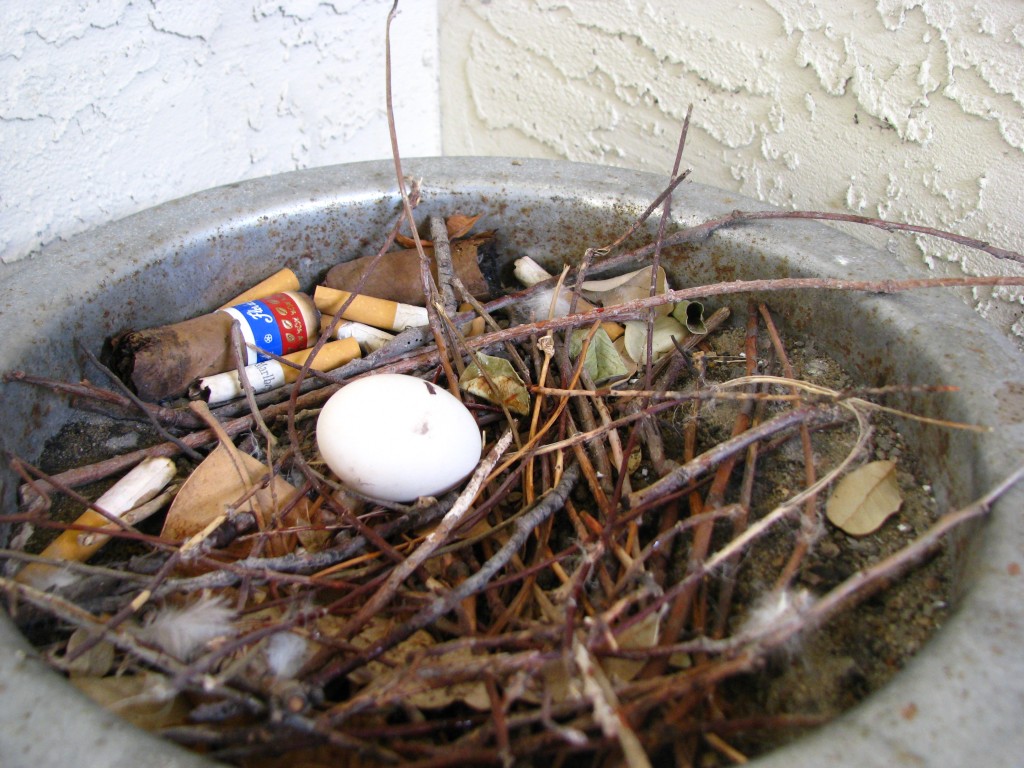
Rock Pigeon nests might be as simple as a couple of sticks collected on a flat platform. Rock Pigeon parents incubate the eggs for about 18 days. This nest is in an urban stairwell (photo by Pauline Schafer & Tobias Hagge, TX).
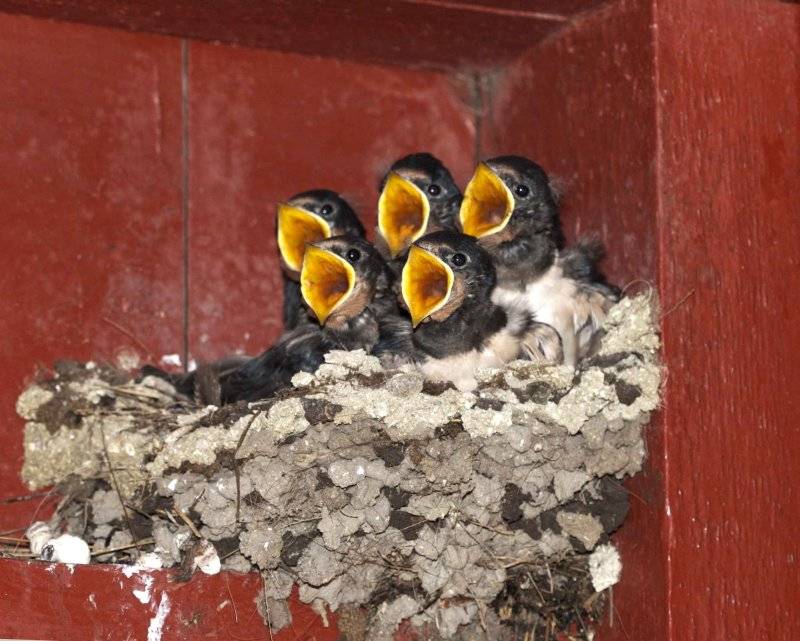
Barn Swallows might make more than 1200 trips with mouthfuls of mud to build their nest (photo by Karen Campbell in Troy, Turkey).
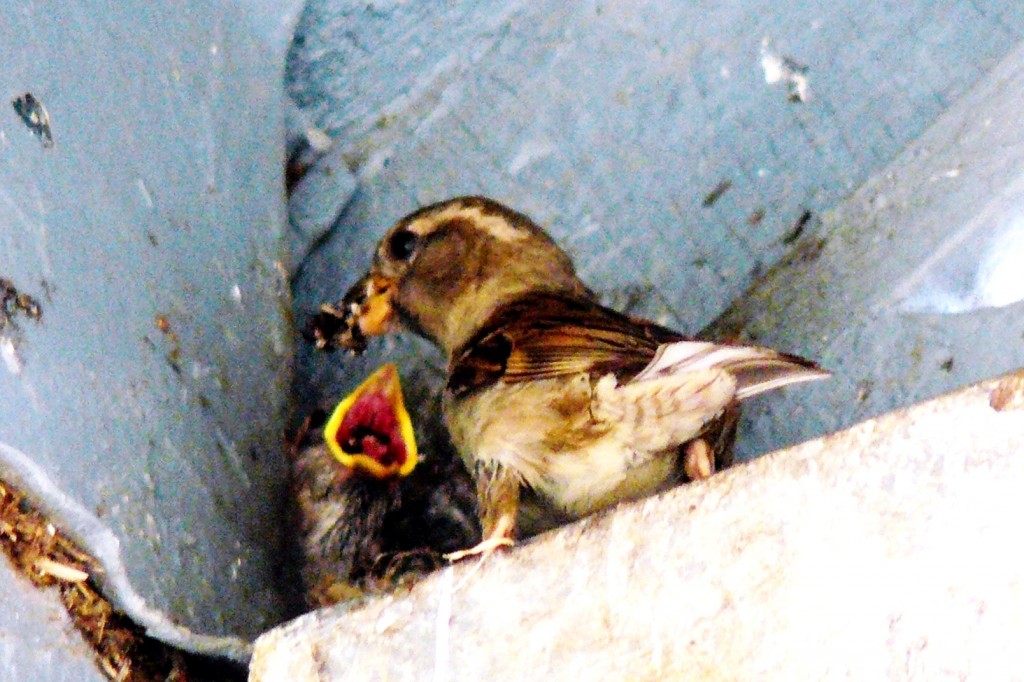
Small birds might bring food to the nest from 4 to 12 times an hour! This is a female House Sparrow feeding its young (photo by Terri Sabados of W Long Branch, NJ).
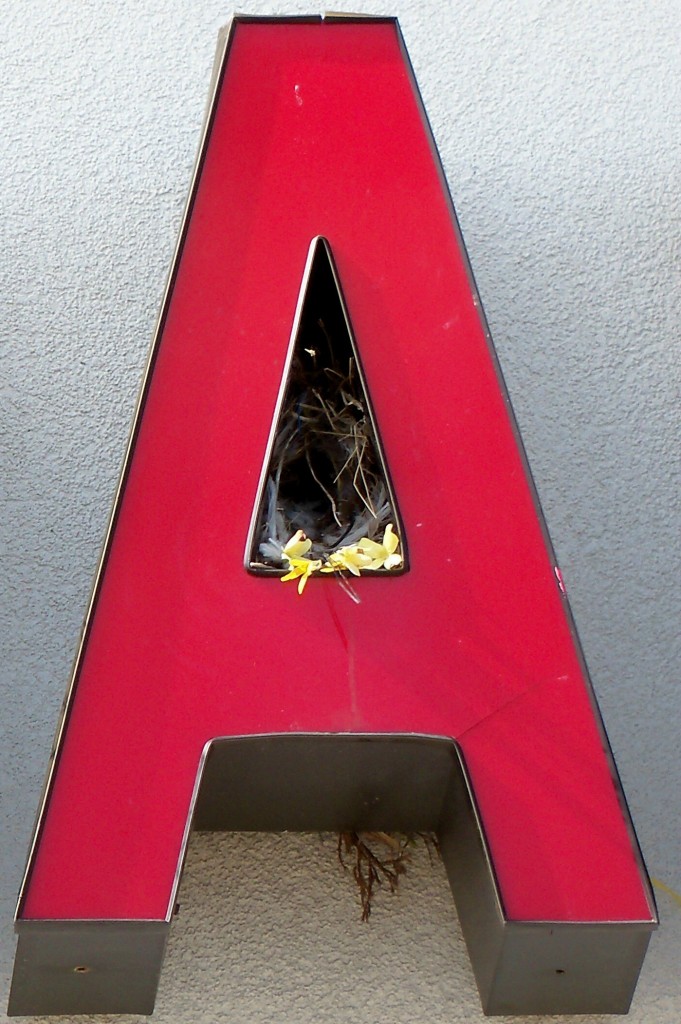
Some birds, like House Sparrows, like to nest in a protected hole, or cavity. They will collect nest material and bring it to the nest…can you see the artificial forsythia in this nest outside a craft store? (photo by Stacey Wyman of Somersworth, NH).
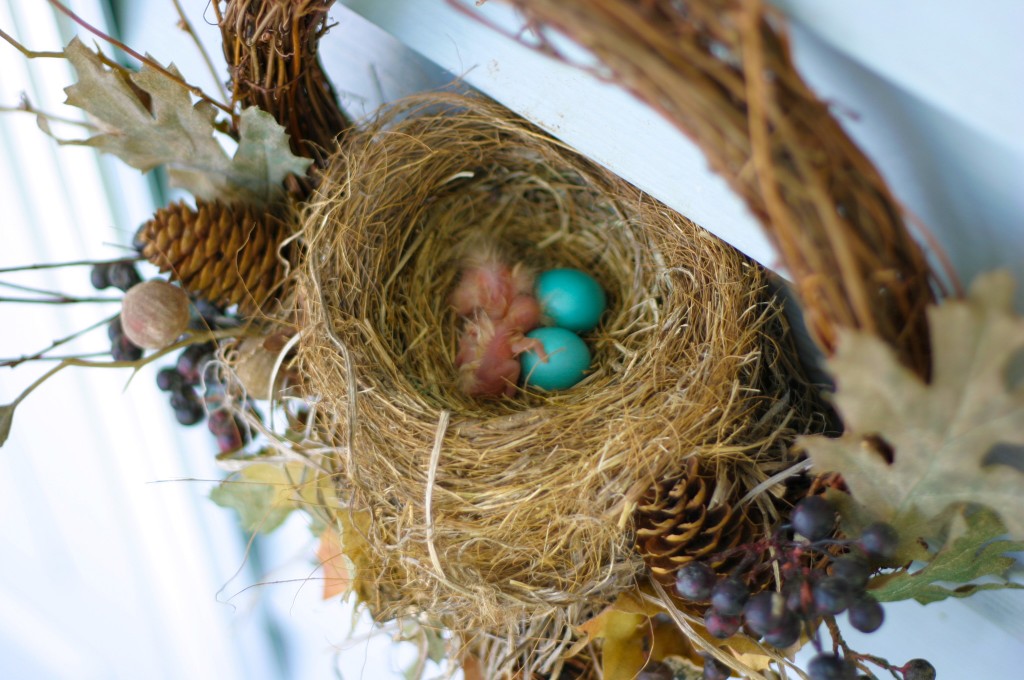
American Robins might nest three times a year, but only 40% of those nests will produce young (photo by Meridian Stiller of Virginia Beach, VA).
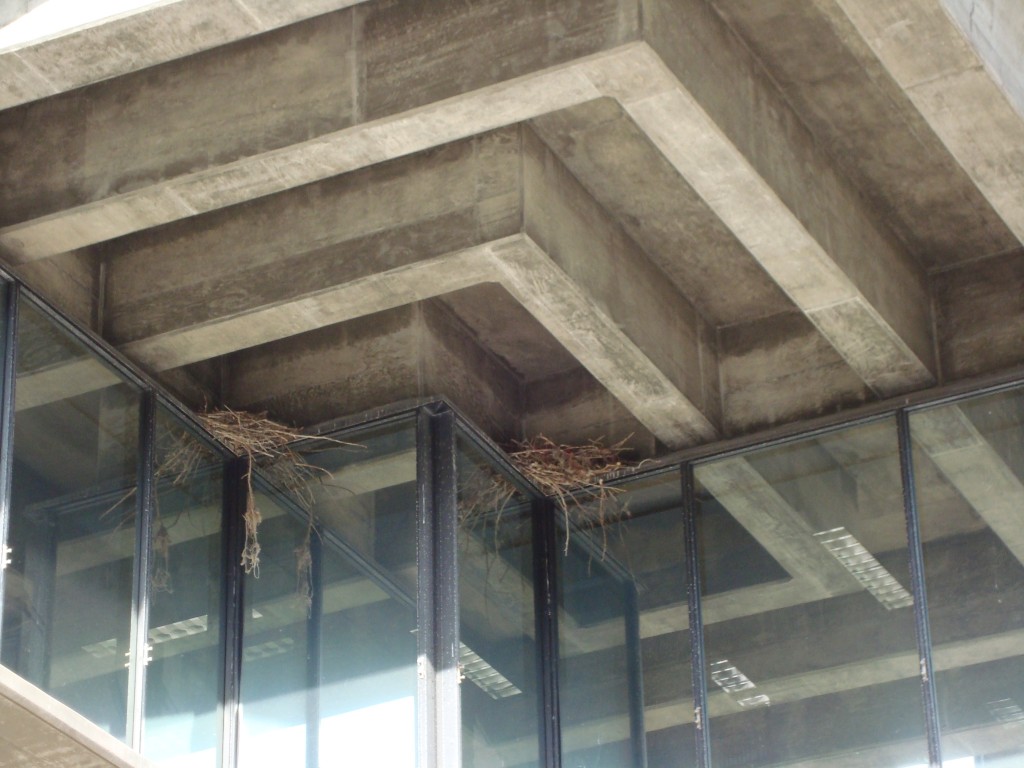
Common Ravens might nest on a cliff, in the crook of a tall tree, a power line tower, or here by a library. They usually prefer places where there is less human foot traffic…is this a hint that fewer students are visiting the Geisel Library at UCSD? (photo by Rachel Graham of San Diego, CA).
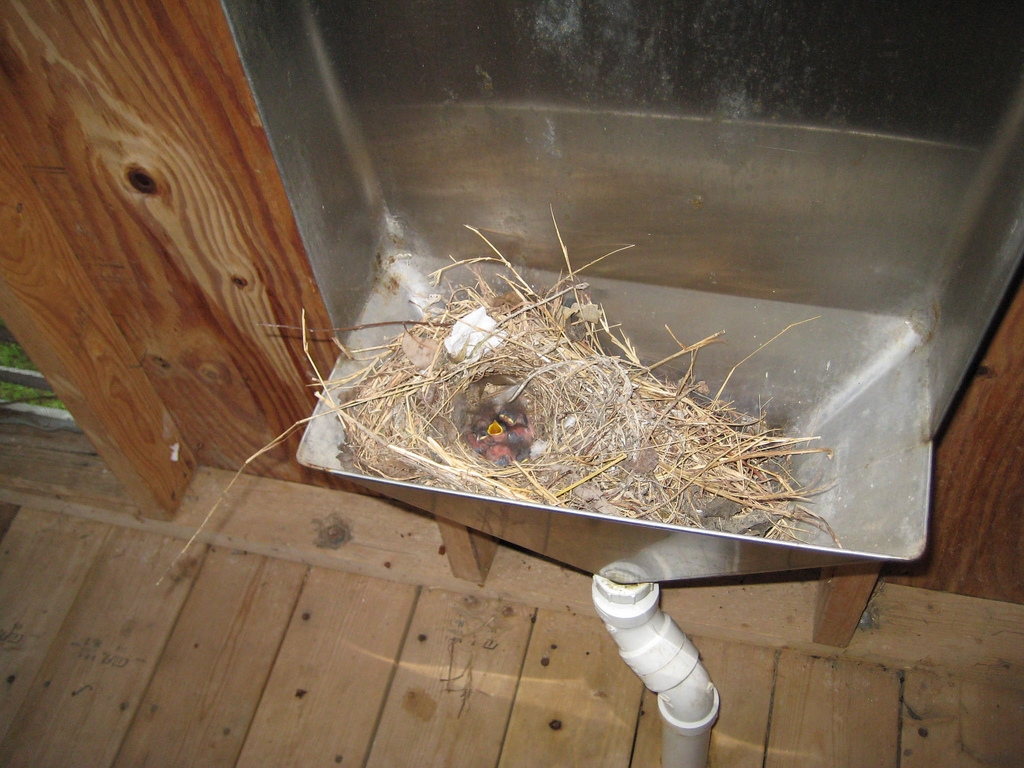
Some birds build their nests in places that may inconvenience humans, but are perfect in the birds’ view, like this nest in a seldom-used outhouse urinal. Birds look for places that provide shelter and are safe from predators. They defend their breeding territory (photo by Vincent O’Brien of Austin, TX).
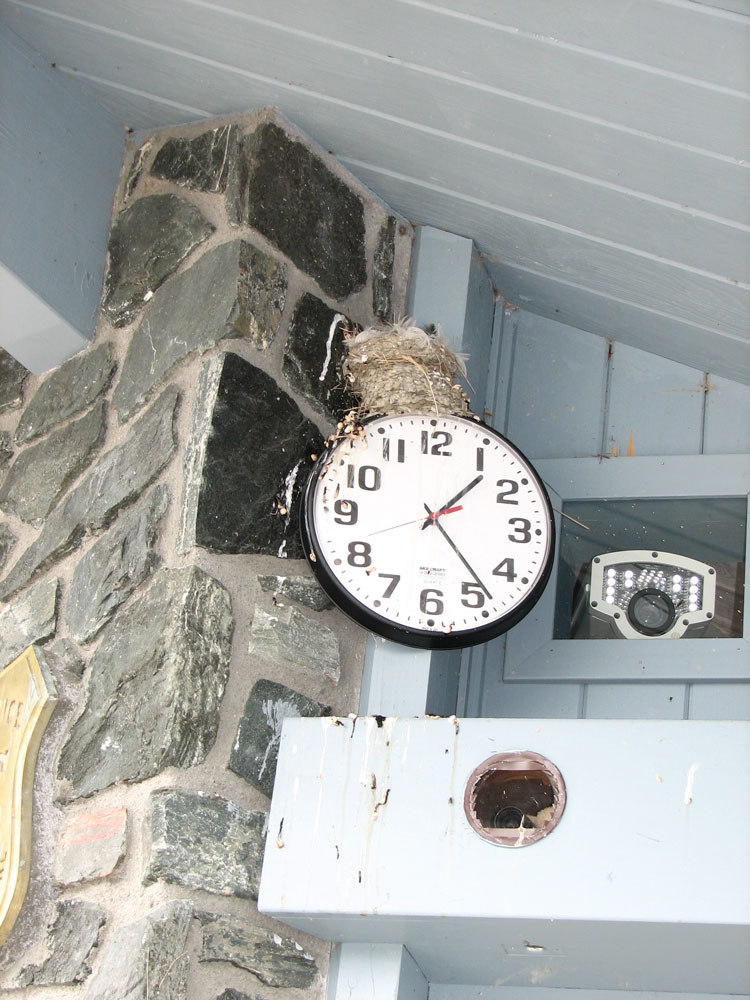
Birds get a cue from day length about when to start nest-building, as the days get longer there will probably be more sun, more warmth, and more food, so it’s the right time to build a nest and raise babies. These swallows (note the mud in the nest) definitely knew when the time was right to start building! (photo by Graeme Rosenau of Juneau, AK).

Sometimes birds bring in plant materials with chemical properties that will help them repel mites, to help keep their nest parasite-free. This grill would have made a nice cavity nest until someone raised the hood! (photo by Chuck Branch of Broken Arrow, OK).
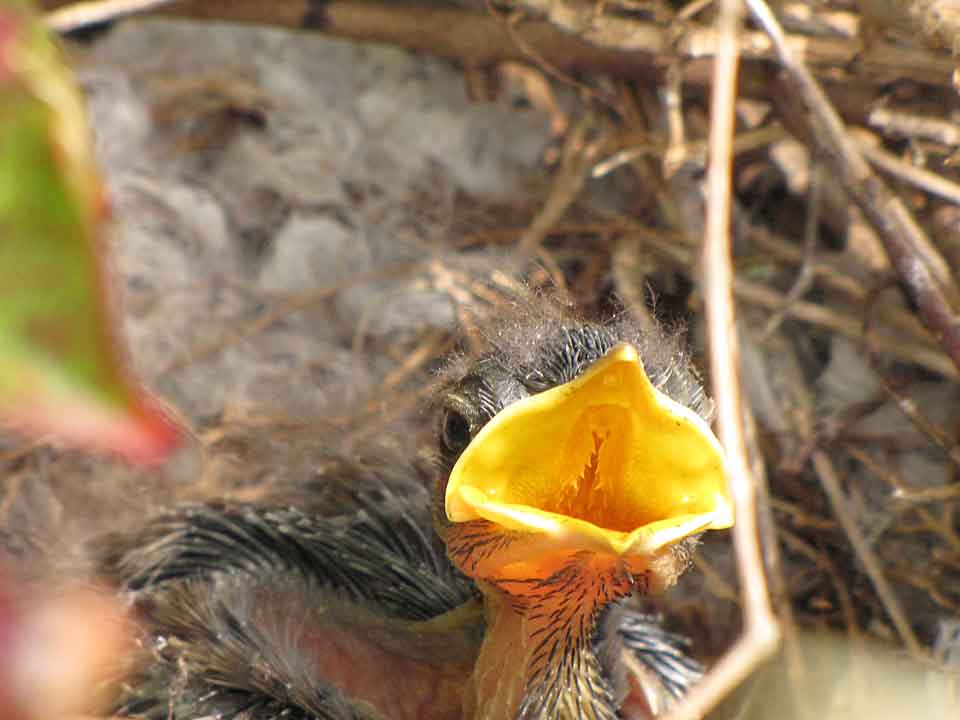
Baby birds have brightly colored beaks that show the parent where to put the food! They have baby feathers, or down. It takes a lot of protein to grow big grown-up feathers! Insects are a good source of protein. This is a Northern Mockingbird hatchling (photo by Marian Mendez of Hialeah, FL).